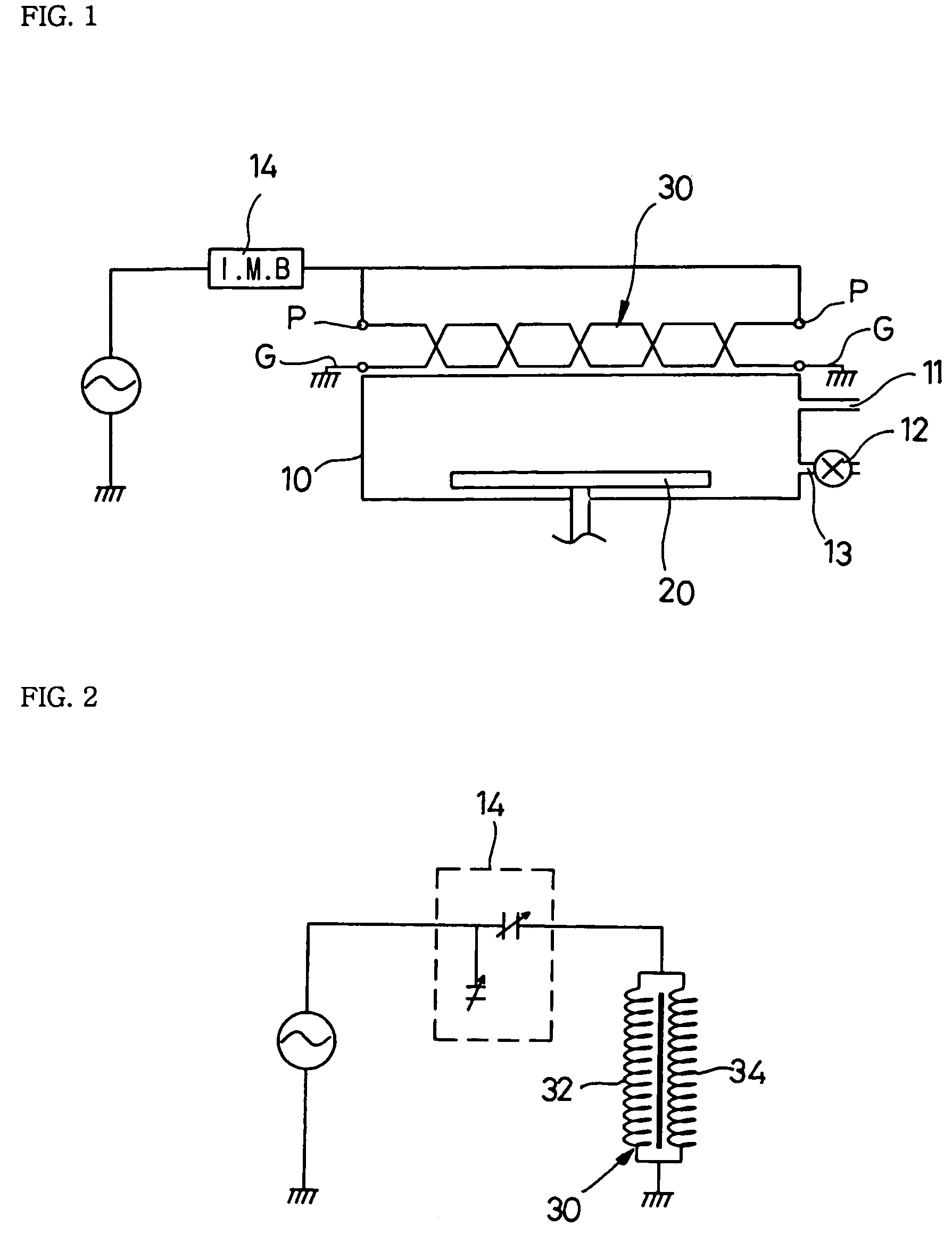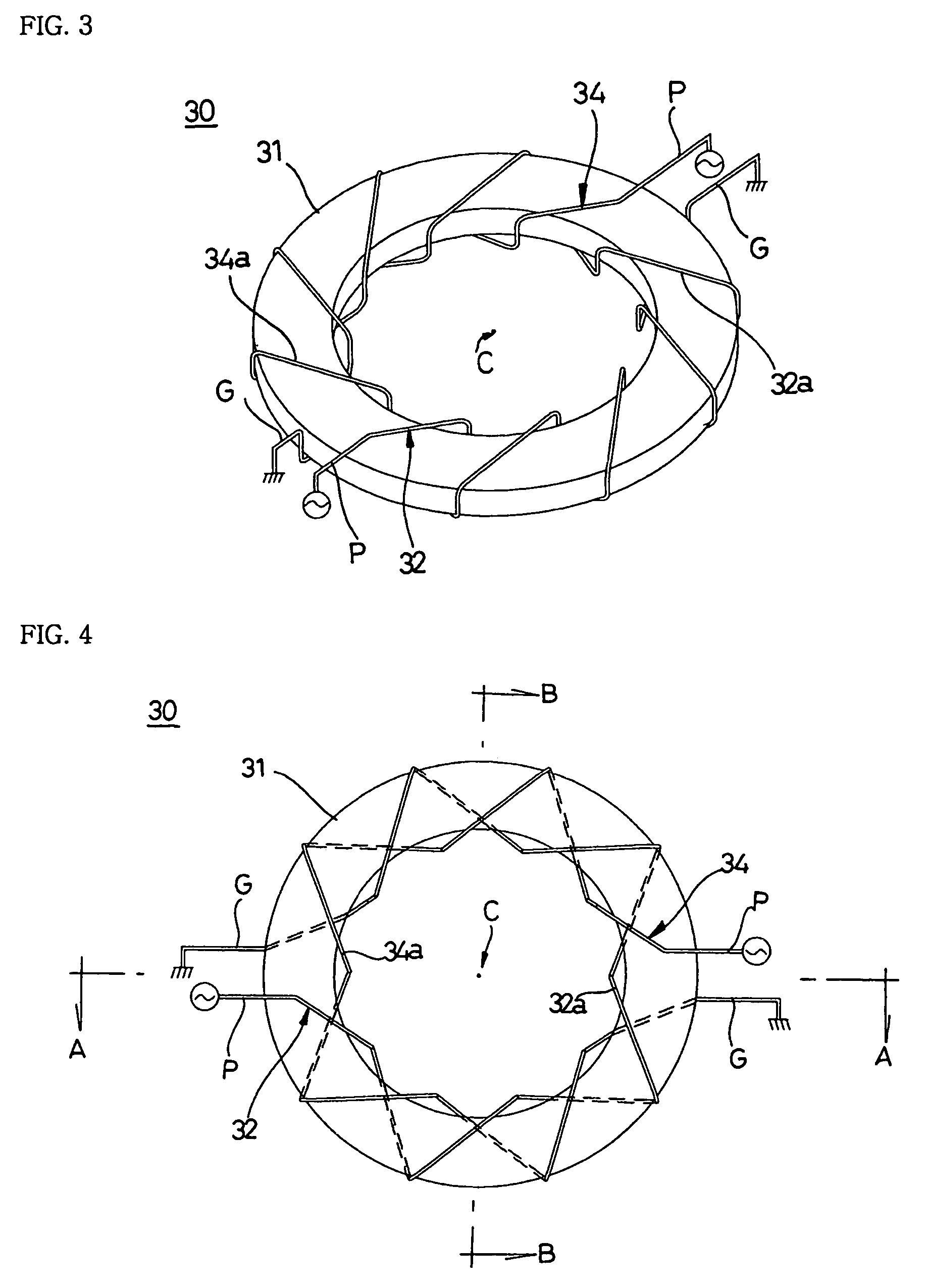Inductively coupled plasma generator having low aspect ratio
a plasma generator and inductive coupling technology, which is applied in the direction of plasma technique, coating, electric discharge lamps, etc., can solve the problems of difficult oxide etching application, increase in the residence time of gas in the chamber, and complicated operation, so as to achieve accurate fabrication of large-diameter semiconductor wafers, reduce chamber volume, and high selectivity
- Summary
- Abstract
- Description
- Claims
- Application Information
AI Technical Summary
Benefits of technology
Problems solved by technology
Method used
Image
Examples
Embodiment Construction
[0032]Non-limiting embodiments of the present invention will now be described in detail with reference to the accompanying drawings.
[0033]FIG. 1 is a cross-sectional view of a plasma generator according to an embodiment of the present invention, FIG. 2 is an equivalent circuit diagram of the plasma generator according to an embodiment of the present invention, FIG. 3 illustrates the structure of an antenna of the plasma generator according to an embodiment of the present invention, and FIG. 4 is a plan view of the antenna of the plasma generator according to an embodiment of the present invention.
[0034]As shown in FIG. 1, the plasma generator according to the present invention is basically constructed of an inductively coupled plasma generator. That is, the plasma generator according to the present invention includes a chamber 10 having a gas inlet 11 through which a reaction gas is supplied, a vacuum pump 12 for maintaining the inside of the chamber vacuum, and a gas outlet 13 thro...
PUM
| Property | Measurement | Unit |
|---|---|---|
| frequency | aaaaa | aaaaa |
| frequency | aaaaa | aaaaa |
| angle | aaaaa | aaaaa |
Abstract
Description
Claims
Application Information
 Login to View More
Login to View More - R&D
- Intellectual Property
- Life Sciences
- Materials
- Tech Scout
- Unparalleled Data Quality
- Higher Quality Content
- 60% Fewer Hallucinations
Browse by: Latest US Patents, China's latest patents, Technical Efficacy Thesaurus, Application Domain, Technology Topic, Popular Technical Reports.
© 2025 PatSnap. All rights reserved.Legal|Privacy policy|Modern Slavery Act Transparency Statement|Sitemap|About US| Contact US: help@patsnap.com



